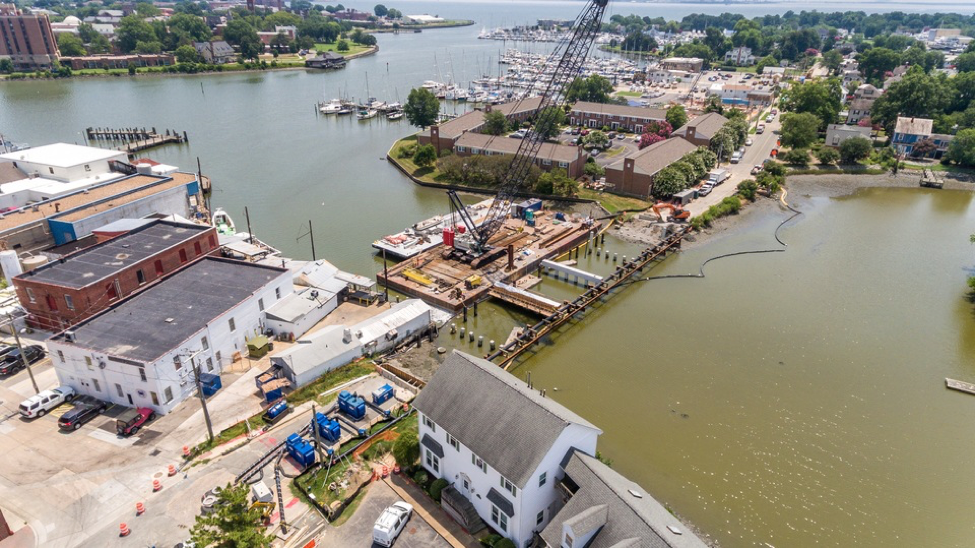Case Study: Thompson Pump Bridge Street Bypass Solves Potential Sewage Contamination

THE ISSUE
An old, worn-out bridge in Virginia was badly in need of replacement, but tearing it down and constructing a new one could create long-lasting sewage problems far more serious than anything caused by a faulty bridge. The bridge would need to be replaced while still preserving the integrity of the existing sewage system through which seven local pump stations flowed.
The job was made difficult due to the close proximity of the sewage system to the area in which new construction would occur. The concern was that the vibration caused by driving the new bridge pillars into the ground would create fractures in the underground pipes, leading to the spilling of catastrophic amounts of sewage at the job site.
THE SOLUTION
Thompson Pump was contacted by subcontractor Shaw Construction to install the new utility work for the project, which included bypassing the existing gravity sewer during bridge construction and rehabilitation of the two existing gravity siphon chambers.
Thompson Pump was chosen because of its expertise in bypass work and its long-standing relationship with the contracting firm. The decision was made to use three Thompson 12-inch oil-less vacuum-assisted pumps and 18-inch HDPE pipe to bypass sewage from a manhole in front of the old bridge to a manhole on the other side of it – a distance of about 550 feet. These calculations were based on wastewater flow data provided to Shaw Construction and Thompson Pump during their initial meeting with the area’s sewage authority.
Thompson Pump fused the pipe and strung it across the bridge using a crane. Once in place, the bypass was activated, allowing construction of the new bridge to commence last summer after months of planning.
From the very beginning, Thompson Pump Sales Engineer Steve Lyon’s flow meter gave him real-time water flow readings, and it did not take long to realize that the flow was significantly higher than anticipated.
There were several reasons why this occurred. The area received an above-average amount of rainfall that allowed groundwater and stormwater to enter the collection systems (inflow and infiltration). New buildings had been built in the area, including an addition to the VA Hospital and several residential communities. Tidal fluctuations also added to the ever-changing flows. All told, what was expected to be about 14 million gallons per day turned out, in reality, to be 19 million.
THE RESULTS
“We were very confident the pumps could handle the extra flow; we just knew we would have to run them harder,” Lyon said. “Our two pumps ran at all times during the project, which lasted about five months – and there were times when the backup pump was also in operation because of the increased water flow.”
Thanks in large part to the Thompson Pump bypass system and its flawless performance, the construction proceeded as planned without interruption and was completed in January. Once finished, Thompson’s temporary bypass was removed and it was “business as usual” when the new bridge opened.
